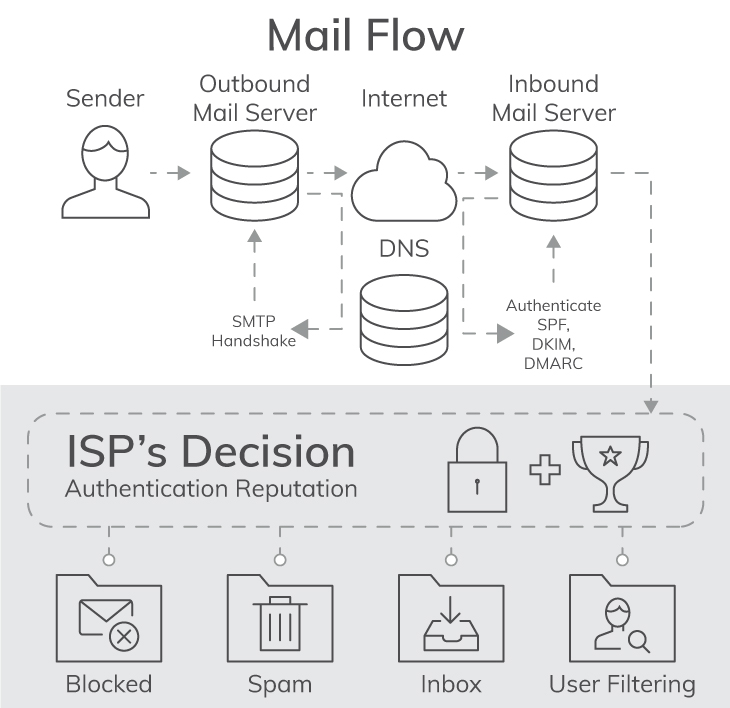Achieving and maintaining a high delivery rate is complicated. This is often because email doesn’t travel straight from your server to a recipient – it goes through several checks and filters in between. And they can be different for every email service provider. Here’s an infographic of the standard journey of an email:

Usually, these email checks include:
1. The SMTP ‘Handshake’: For every email address you send to (e.g.: [email protected]), you initiate an SMTP (Simple Mail Transfer Protocol) ‘handshake’. This is where the SMTP server recognises the domain you’re sending to (e.g.: everlytic.com), contacts the receiving server responsible for accepting messages for that domain, and they exchange multiple pieces of information.
2. Determining factors of delivery:
- DNS: The DNS (Domain Name System) is like the phone book of the internet. The receiving server checks it to find out who the sender is (takes place in the SMTP handshake).
- Authentication: Security checks, like SPF, DKIM, and DMARC
- Reputation: Blacklist, volume, integrity, and accreditation with an email deliverability service provider
- Content: Images, text, subject, and links
If your email passes these checks, it’ll be sent to your subscriber’s mailbox. If the recipient’s email client determines that it looks suspicious, but isn’t obviously spam, it may be filtered to your recipients’ Junk or trash boxes. And if it decides that your email is too much like spam, it’ll probably get quarantined or blocked.












